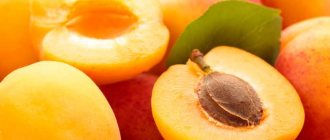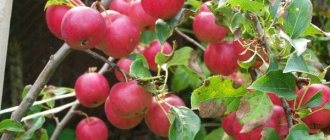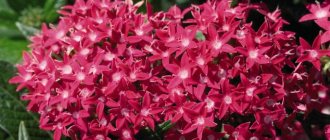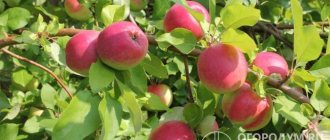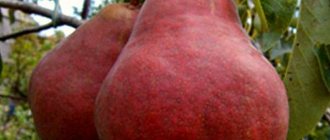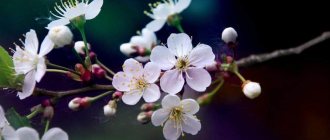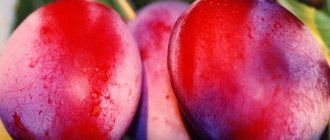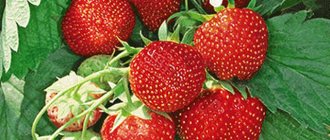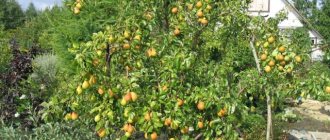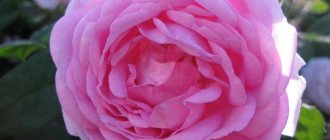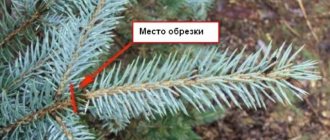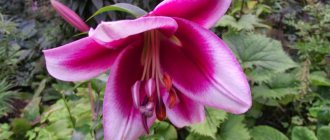A large, juicy and tasty plum is always a godsend for a gardener. The varieties that grow in our country are quite diverse, but not many of them can boast of a really good harvest. Did you know that columnar plums are gaining incredible popularity today? What these trees are, what their features are and which varieties are best to choose for your garden, we will discuss today.
general characteristics
These trees are not similar in their characteristics to an ordinary plum orchard. Most often in our gardens we see low-growing trees with a spreading crown. And columnar plums are amazing plants whose fruits are located directly on the trunk. They appeared relatively recently, when an American breeder noticed an unusual branch on a tree, which was thinner than the rest and bore fruit well. The result of the work on it was the appearance of the world's first columnar apple tree. Later we got to the pears and, last of all, to the stone fruits.
Today, columnar plums are no longer a curiosity, although there are gardeners who have just learned of their existence. Obvious advantages include the small size of the tree, growing in height from one and a half to two meters, an underdeveloped crown and the early onset of abundant fruiting. By the end of the second year of life you will receive quite a large number of fruits. In addition, good shelf life is noted, which means that the resulting harvest can be transported to the place of sale without fear for the goods.
General description of columnar plum
This name is given to plums that have a narrow but dense crown directed vertically upward. The shape of the trees resembles columns, which is what gives them their name. Almost all branches of a plant of this type are directly involved in fruiting and are represented by thin flexible shoots; there is almost no need to form a columnar plum.
Are there columnar plums?
Many gardeners doubt the existence of such trees. The fact is that the first plant with an unusual narrow pyramidal crown was the Mackintosh apple tree - and such a crown was the result of a random mutation discovered in the 1960s.
However, since then selection has greatly advanced. Narrow pyramidal apple trees, pears, plums and other crops were artificially bred.
All these trees are united by the fact that the vertical growth of their branches is a selection feature, and not another mutation and not the result of crown formation. Therefore, the answer will be positive - columnar plums exist.
Important! Beginners often get confused by the names and look for, for example, a description of the Patriot plum. However, there is a narrow pyramidal apple tree with this name.
What does a columnar plum look like?
The plant is easy to recognize. Its branches are thinner than those of ordinary plums and covered with smooth bark. The shoots grow not to the sides, but upwards at an acute angle, as if trying to press themselves against the main trunk of the tree.
Characteristics of columnar plum
Plants of this type differ from ordinary varieties not only in appearance. The description of the columnar plum reports a number of other features.
- The frost resistance of such trees is very high - even temperatures below - 30 degrees do not harm the health of plum plants.
- The root system of trees is less developed than that of ordinary trees. Therefore, they can be planted almost closely - they will not harm either the crowns or the roots of each other.
- The plants are distinguished by their small height - they rarely grow above 3 m. At the same time, the yield is very high - up to 12 kg per tree.
- Narrow pyramidal varieties are early ripening. The fruits appear already 2 years after rooting. Up to 7 years, the yield increases year by year - and then declines. Fruiting usually stops between 13 and 17 years of age.
The advantages include early ripening, high yield, strength and frost resistance. You need to prune the columnar plum very little in the spring, since it has few “extra” branches.
Do columnar plums need a pollinator?
Some varieties have the ability to self-pollinate - for example, Imperial. Others require pollinators for high yields.
Productivity
Columnar plums are very convenient for harvesting, since the trees are not spreading and do not exceed the average height of a person. Despite this, each adult plant can withstand a harvest of 10-12 kg. That is why it is very important to monitor it and tie it up as necessary. The first 6-7 years are marked by intensive growth and development of the seedling. At the same time, there is an increase in productivity. In the 7-8th year, the tree already enters the maturity phase. For about 10 years it will delight you with a consistently high yield. And in the 17th year of life, the number of fruits drops sharply. Now the plum can only serve as a decoration for the garden, or the tree must be replaced with a younger one.
Columnar varieties of plums for the Moscow region
When you go shopping for seedlings, do not forget that each variety has its own characteristics. In particular, it is very important to find out how resistant the seedling you choose is to winter cold. It is advisable to use only locally selected varieties - they will definitely be adapted to climatic conditions and will not freeze out. Below we will look at the varieties that are recommended for planting in the Moscow region.
Like all other fruit trees, the columnar plum requires attention and care. Before planting, it is important to prepare the soil well using a nutrient substrate. The planting hole is filled with light soil, which must contain sand, as well as humus or compost (3-5 kg per tree). It is not recommended to apply mineral fertilizers at the time of planting - this can have a bad effect on the development of the plant. The distance between trees is 40-50 cm, and between adjacent rows - 1-2 meters.
Self-fertile columnar plum
The main reason why gardeners prefer self-pollinating columnar plums is that there is no need to plant extra trees. This is especially true for small gardens, where it is difficult to place several even small trees at once.
This category includes many varieties, for example:
- Imperial;
- Angers;
- Ruby.
Planting care
Planting a columnar plum is a simple procedure; even a novice gardener can handle it. And then you will need to carefully and carefully care for the young tree. During the warm season, plants should be fed with urea at the rate of 50 g of fertilizer per 10 liters of water. It is recommended to use at least two liters of solution for each tree. Fertilize the plum in three stages, with an interval of one day of the week. You can use urea and immunostimulants at this stage. By the end of summer, grown and strengthened trees begin to be fed with phosphorus-potassium fertilizers.
Planting and care
To get a strong plant and reap a good harvest, it is very important to plant it correctly and provide proper care.
Site selection and site preparation
Light soil is suitable for the plant. It shouldn't be swampy. Sandy loam soil is considered the best option. The tree grows well in southern sunny areas.
It is recommended to start caring for the crop in advance.
Fertilizers are added to the hole for the seedling. This is permitted before boarding. However, it is better to use fertilizers several months in advance.
Preparing a seedling
It is recommended to buy seedlings in specialized nurseries that breed crops. This will help you acquire a crop that has been adapted to climatic conditions and receive professional advice regarding the specifics of planting and care.
Experts advise buying annual plant seedlings, since older crops will not take root well. It is recommended to carefully inspect the plant before purchasing.
Particular attention should be paid to the roots. It is important that they are well branched. You should not buy trees with damaged, broken or dried roots. The top of the tree should also be healthy. It is important that the branches show no symptoms of disease or harmful insects.
Step-by-step planting instructions
Planting should be done after the soil has fully warmed up. To do this, it is recommended to do the following:
- Prepare holes in the selected area. Their depth and width should be about 40 centimeters. It is worth maintaining an interval of at least 50 centimeters between seedlings. It is recommended to maintain a distance of 1 meter between rows.
- Then you should prepare fertile soil. To do this, you should take 4 kilograms of humus and garden soil. Mineral preparations or other fertilizers should not be added. This will lead to the death of the tree.
- It is worth placing a drainage layer at the bottom of the recess. This is recommended if the groundwater is high. For this, small stones or crushed bricks are used.
- It is worth pouring a small amount of fertile soil on top and installing a seedling. The root collar should protrude 3-4 centimeters above the ground surface.
- Carefully straighten the roots of the plant and sprinkle the hole with soil. Gently compact the soil with your hands.
- Water the plant with root growth stimulants. For this purpose it is worth using Kornevin. This will speed up the process of rooting the culture.
Watering
The plant needs moderately moist soil. That’s why it responds well to watering. The procedure is carried out several times during the season. This should be done in spring, summer and autumn.
For a columnar plum, 1 abundant watering per month is sufficient. In dry weather, the number of procedures should be increased.
Mulching
As necessary, loosen and mulch the tree trunk circle. This process improves oxygen access to the roots and normalizes the soil structure, making it lighter and looser. To avoid moisture evaporation, the ground should be sprinkled with peat.
When processing the tree trunk circle, it is worth getting rid of weeds. This will help prevent bacterial infections.
Top dressing
This plant requires systematic use of fertilizers. For columnar plums, you should use urea. To prepare a solution for 10 liters of water, take 50 grams of fertilizer. Feeding should be done 3 times, taking a break of 2 weeks. The first fertilizers are applied during the active growing season.
How to trim
Columnar plums do not need pruning and crown formation, since they are almost completely devoid of side shoots. Therefore, in spring or autumn, it is enough to prune diseased, damaged or dry branches. It is also worth cutting off the top of the tree in case of severe frostbite.
Preparing for winter
Young plants are afraid of frost, so they should definitely be prepared for winter. It is recommended to insulate the tree trunk circle with straw or fallen leaves. In this case, the trunk should be wrapped in spruce branches. This will help prevent it from being damaged by rodents.
Diseases: treatment and prevention
The plant is considered resistant to various diseases. However, sometimes a culture suffers from the following violations:
- gommosis;
- Clusterosporiosis;
- coccomycosis.
See also
Description of cherry plum variety Kuban Comet, details of planting and care
Read
To avoid such problems, the plant should be provided with proper care. If signs of disease appear, the affected parts of the tree should be removed. The plant itself is treated with copper sulfate. Bordeaux mixture is also suitable.
Trimming
This is a traditional ritual that is carried out in relation to all fruit trees, so that only those branches that will bear fruit are grown, without unnecessary growth of green mass. It is recommended to trim the columns in the spring, before the buds swell on the trees. Since the tree itself is low-growing, the top is usually not removed. But if you want to get several side shoots, you can lightly pinch it. One good shoot is left from the lateral shoots, and the rest are used as a scion. Do not forget that all flowers that form in the first summer after planting must be removed: for now, all nutrients should go to the formation of a powerful root system, as well as to the growth of the seedling itself.
Variety Imperial
It is the most common in Russia. Gardeners call it “peach” for its unusually large and tasty round berries. Their color is also suitable - dark red. The weight of one fruit can reach 55 g. The pulp pleases with its juiciness and sweetness. The most delicate nectar notes and bright golden color will give pleasure even to children, who usually do not really like garden plums for their tart taste.
Columnar plum Imperial gives harvest in the twenties of August. A mature tree reaches two meters in height. The fruits can be eaten immediately or used for various preservations.
The pride of gardeners Blue Sweet
Continuing to consider the columnar varieties of plums, one cannot help but remember this unique variety. Do you want an exact analogue of the southern prune to grow on your site? Then this is what you need. The dark purple fruits reach a weight of 75 g. The pulp is very juicy, with a sweetish-sour taste. Their shape is oval and even slightly flattened.
This is a large tree, by the standards of the column. The height can reach 2.2 meters. The maximum crown diameter is 90 cm, so they can be planted quite close to each other. The fruits ripen in August. This variety is distinguished by its stunning presentation and good keeping quality. One tree can produce up to 13 kg of selected plums, and this is despite its compact size.
Disease Prevention
Columnar plum varieties are disease resistant, but if the root system or branches are damaged, the tree may become diseased. Control and prevention measures are necessary.
| Disease | Signs | Causes | Control measures |
| Gommoz | The appearance of resin drops on the branches and trunk of a plum tree | Damage from severe frost, excess moisture and fertilizers | Treating “wounds” with 1% copper sulfate solution |
| Coccomycosis | Red spots on the foliage followed by its falling off | Excessive humidity, accumulation of fallen leaves under the tree | Spraying with Bordeaux mixture or copper chloride oxide |
| Clusterosporiasis | Brown spots “burning” the leaf | Fungal disease | Spraying with Topsin-M according to the instructions |
Commander
Columnar plum varieties for the Moscow region are constantly updated, and improved ones with more interesting characteristics appear every year. Commander differs from others in its reddish or purple hue of skin and tasty, juicy large fruits. The pulp has a delicate structure, yellow color and a sweet and sour taste. The bone is medium and can be removed without any problems. This variety is used both processed and fresh. The mid-ripening variety produces fruits from mid-summer, when most plums are still in the ripening stage. The tree grows up to two meters in height.
Description of Chinese plum
Chinese plum growers are tempted by early fruits (2-3 years after planting) and their high yield. And the incredibly low pest susceptibility and low disease susceptibility add a few more benefits.
The Middle Kingdom plum resembles a large shrub or small tree with a branched, spherical crown and reddish-brown, smooth shoots.
A special feature of the Chinese plum is its early (with or before leaves), grandiose and rich flowering, which gives the fruit plant an incredibly charming appearance. Agricultural producers are very excited about growing new varieties of Chinese plum. By crossing the American plum with the Chinese plum, we were able to develop regionalized varieties for the middle zone.
The next part of this article will be devoted to a description of plum varieties.
This is interesting: In China, the national flower is the plum flower, symbolizing happiness, peace, joy, prosperity and longevity.
yellow plum
If you want to get your harvest early, then this is the ideal option for you. For the most part, columnar plums for the Moscow region are late, and yellow ones begin to bear fruit at the end of June. The fruits are very large, round in shape, yellow in color, with the aroma and taste of fresh honey. Used fresh and canned. The plant is self-pollinating, so if rainy weather or disease prevents insects from doing their job, you will still not be left without a harvest. The tree is large, reaches 2.5 meters in height, tolerates winter well and is resistant to disease.
Collection and storage
Harvest time depends on the variety and the climate of the region. In the Urals and Siberia, plums ripen towards the end of summer or September. In southern latitudes, the harvest will be ripe by the end of June. Early varieties of fruits are harvested over several weeks, and late varieties are harvested immediately. The procedure should only be carried out in dry weather. If the variety is early ripening, remove fruits from the branches in several passes, since they ripen unevenly.
You need to store plums in a place with an air temperature of 0-2 degrees Celsius and a humidity of at least 85%. Store fruit in low trays with paper on the bottom or in wooden boxes. When transporting, try not to damage the wax coating. Plums that will not be stored should be eaten immediately or stored for the winter.
Unripe fruits should not be stored in the refrigerator, this will slow down the ripening process and worsen the taste. The fruits will keep intact for 3 weeks at a temperature of no more than 7 degrees Celsius.
Mirabella
Another excellent early ripening variety with excellent yield. One tree will give you up to 15 kg of medium-sized plums. Each of them is no more than 40 g, but this does not in any way affect the excellent taste and fruity aftertaste. In appearance, the fruits are very similar to yellow apricots, only one barrel is covered with a slight blush. The pulp has a dense structure and a pleasant sweetish taste. The tree begins to bear fruit in mid-August. Ready plums can hang on the tree for a long time without falling off. Summer residents note the high resistance of the variety to a variety of diseases.
Self-fertile varieties
Plums that do not require pollinators show more stable yields each year. Among them there are both time-tested varieties and promising new products, which continue to be improved every year, improving the most important characteristics.
"Memory of Timiryazev"
Yellow-fruited plum, which saw the light in the middle of the last century. A variety with late ripening - you can enjoy ripe fruits no earlier than the end of summer. The pulp is medium juicy and has a pronounced bitterness. High resistance to dangerous diseases—clasterosporia and fruit rot—allows the variety to be included in the list of highly sought-after varieties.
"Hungarian Korneevskaya"
The variety has high sugar content. Due to their dark color, the fruits are often used to prepare prunes. The fruiting phase begins in 3-4 years. After this, an abundance of dessert fruits are collected annually from tall trees. The mass of the commercial specimen is 130 g. The stone is easily separated from the pulp. A special feature of this variety is that branches break under the weight of the harvest. To prevent this, props are installed as the tree grows.
In memory of Timiryazev
Another beautiful columnar plum. The description of the variety emphasizes that it is perfect for the Moscow region. Appeared as a result of crossing varieties such as Skorospelka red and Victoria. The fruits are small in size - about 22 g. They are ovoid in shape and yellow-red in color. The pulp is tender with a fine-grained structure. The fruits are medium juicy, very aromatic and tasty. In terms of timing, the variety is quite late; in some regions it can ripen only in August. The crown has a bush-like shape, but the branches are not too close. From one tree you can collect up to 9 kg of fruit. The variety is perfectly adapted to frost, but does not like drought. Therefore, it is very important to water the plantings regularly and thoroughly. According to gardeners, the fruit tree resists fruit rot and other fungal and viral diseases well.
Features of growing plums in the Moscow region
Plum planting in the Moscow region begins in the spring. The crop grows well and bears fruit in well-drained soils with neutral acidity (pH 6.5-7.2).
The best varieties of cherries for the Moscow region
The hole for the seedling is dug in the fall. Fertilizers are placed in it - humus, superphosphate and wood ash. Trees are planted in open ground, adhering to the following rules:
- The size of the hole should be 2 times larger than the root system of the seedling.
- The plant is carefully lowered into the hole, straightening the roots. It is buried so that the root collar remains 5-6 cm above the soil level.
- Cover with soil. The earth is compacted well.
- Immediately water it abundantly (20-25 l) and install a support so that the tree grows evenly.
Caring for a plum as it grows involves performing a few simple steps:
If it rains regularly, the trees are watered once a month. The optimal amount of water for a young seedling is 6 buckets, for a fruit-bearing one - 10 buckets. During dry periods the rate is increased slightly.
Important! The soil should be moistened to a minimum depth of 60 cm.
In the fall, be sure to carry out the last watering.
Complex fertilizer is used for fertilizing. At the end of September, organic matter is placed under the plums, and nitrogen is added in the spring. But in the first year, the plum does not need fertilizer.
In autumn, the soil is mulched and the trunk is covered with spruce branches. If there are rodents in the garden, install sheets of roofing material.
For better fruit ripening and tree development, shoots are regularly pruned. The procedure is carried out in the spring, when sap flow has not yet begun - in March or early April. Sick branches damaged by birds, growing inside the crown or extending at an acute angle must be unconditionally removed.
Plum, growth
Young plants do not need to be pruned. The crown begins to form at the 2nd year. After the start of fruiting, it is necessary to restrain the size of the tree in order to prevent the growth of non-fruit-bearing wood and to ensure convenient harvesting.
It is important! For pruning, use a clean, well-sharpened tool. The cuts are carefully covered with garden varnish.
It is worth highlighting the features of growing the varieties indicated above:
- Bluebird is not susceptible to moniliosis, polystigmosis or clasteroporosis. Easy to care for.
- Bryansk late - resistant to fruit rot and klyasterosporiosis. In dry years, the fruit drops a lot. Needs regular removal of root shoots.
- In memory of Timiryazev - it is necessary to cover well for the winter, otherwise the shoots will freeze. Plum is moisture-loving and does not suffer from fruit rot or cluster blight. Sometimes the crop is affected by mites.
- Red early ripening is a drought-resistant species. The fruits should not be allowed to become overripe, otherwise they will begin to crumble. Susceptible to clasterospriosis.
- Egg blue - does not tolerate lack of moisture. During dry periods, it especially needs abundant watering. The fruits do not store well, so they need to be eaten or processed quickly. Susceptible to clusterospirosis.
- Collective farm renklod is the most unpretentious variety; it bears fruit even with a complete lack of care. Does not require regular pruning. It is only necessary to shorten the main conductor and mold the crown. Susceptible to fungal diseases. When overripe, the fruits quickly fall off.
- Smolinka is a good donor plant. Gives the shoots excellent fruit taste. Easily tolerates trimmings. During fruiting, it is necessary to install supports for the branches, otherwise they bend greatly under the weight of the crop and break. Immune to clasterosporiosis.
- Yakhontovaya is drought-resistant and not afraid of viral and fungal diseases. The fruits are poorly stored and must be processed immediately.
- Imperial and Commander - do not require crown molding. You just need to remove dry and crooked shoots in a timely manner. It is also necessary to install supports, otherwise the tree will bend under the weight of the crop.
It is important! If proper agricultural practices are followed, diseases and pests rarely appear on these varieties of plums. The main thing is to detect the problem in time and prevent it from spreading throughout the garden.
The most dangerous disease of the plum orchard is coccomycosis. External signs are the appearance of purple or red-brown small spots on the leaves, which gradually grow. A pink coating forms on the reverse side. To prevent the disease, it is necessary to burn fallen leaves and dig up the soil in the tree trunk circle. Trees should be treated with 1% Bordeaux mixture.
Copper sulfate
Similar methods are used to combat clasterosporiosis. Plants can also be sprayed with a 3% solution of copper sulfate.
To protect gardens from pests, after the end of flowering, plums are treated with compounds that do not harm the trees and the future harvest. For example, Chlorophos, Insegar, Fufanon, Rogor or Karbofos.
